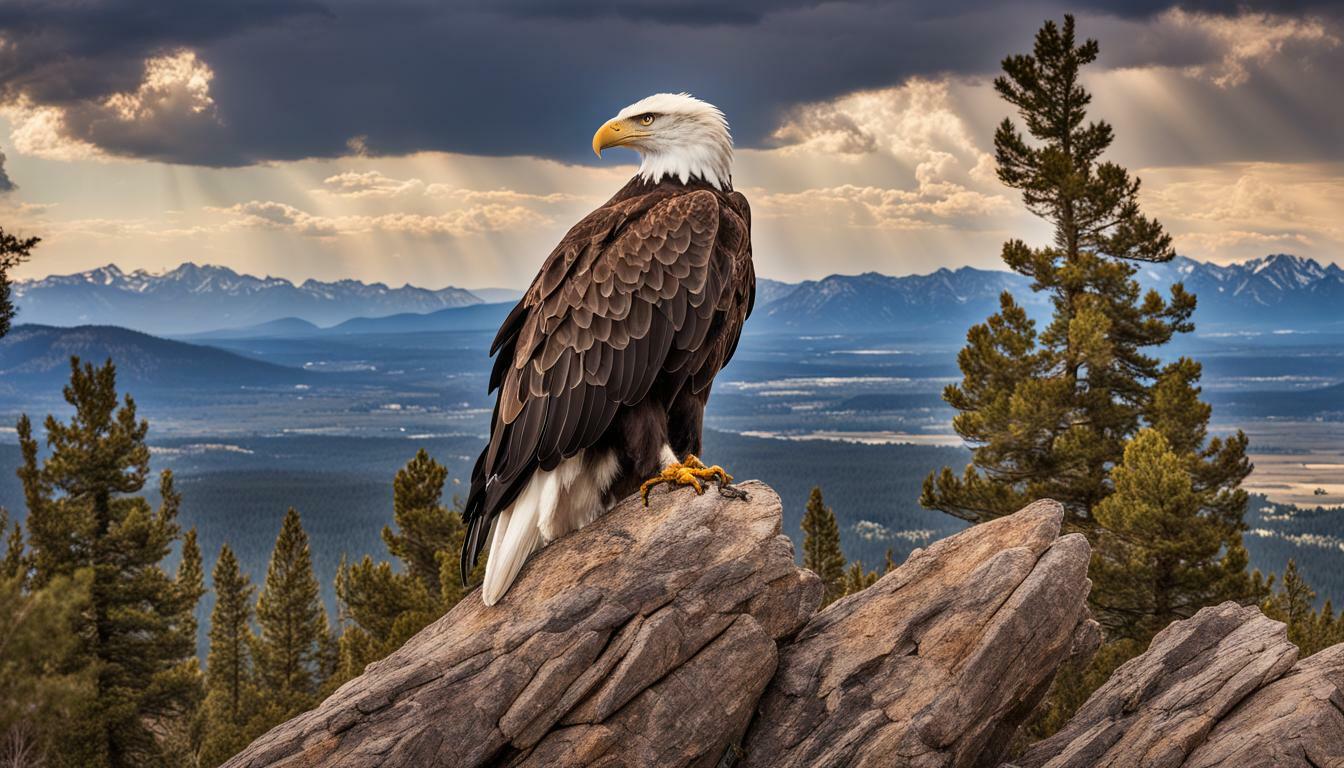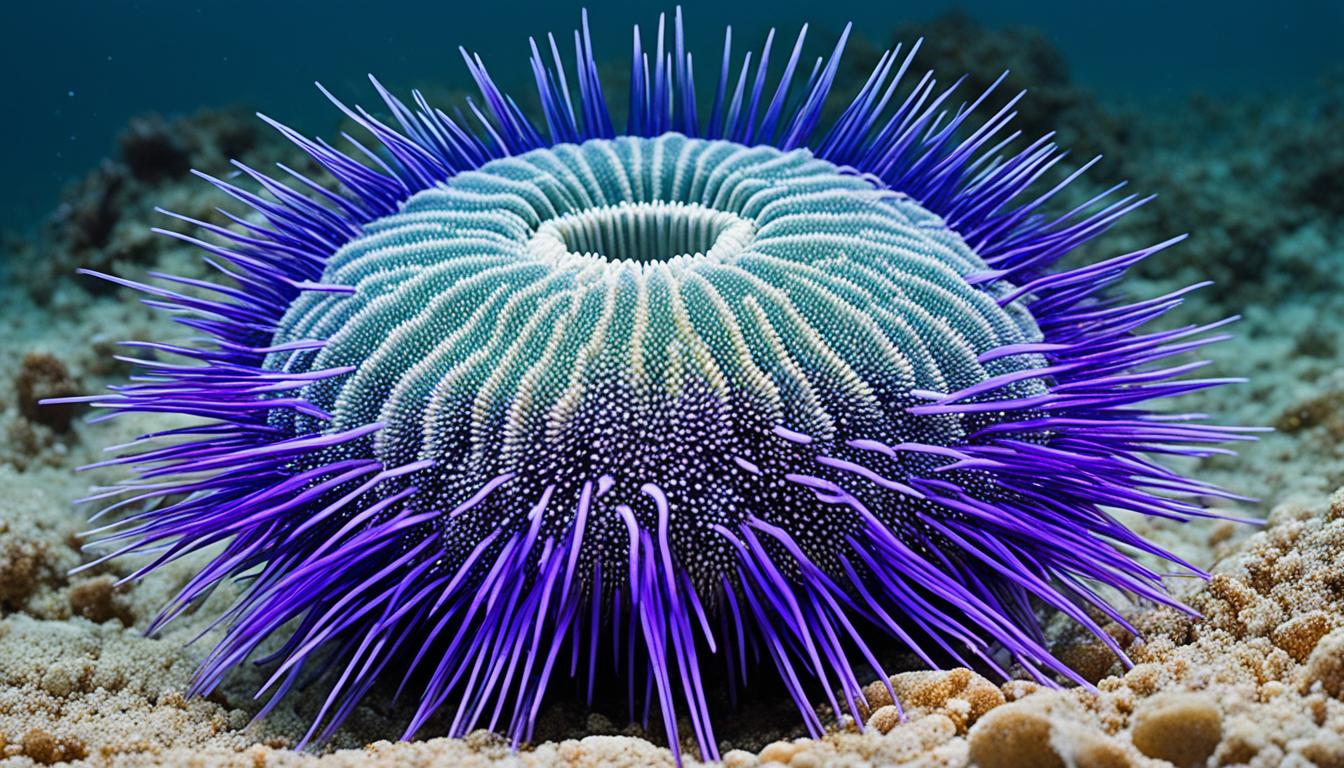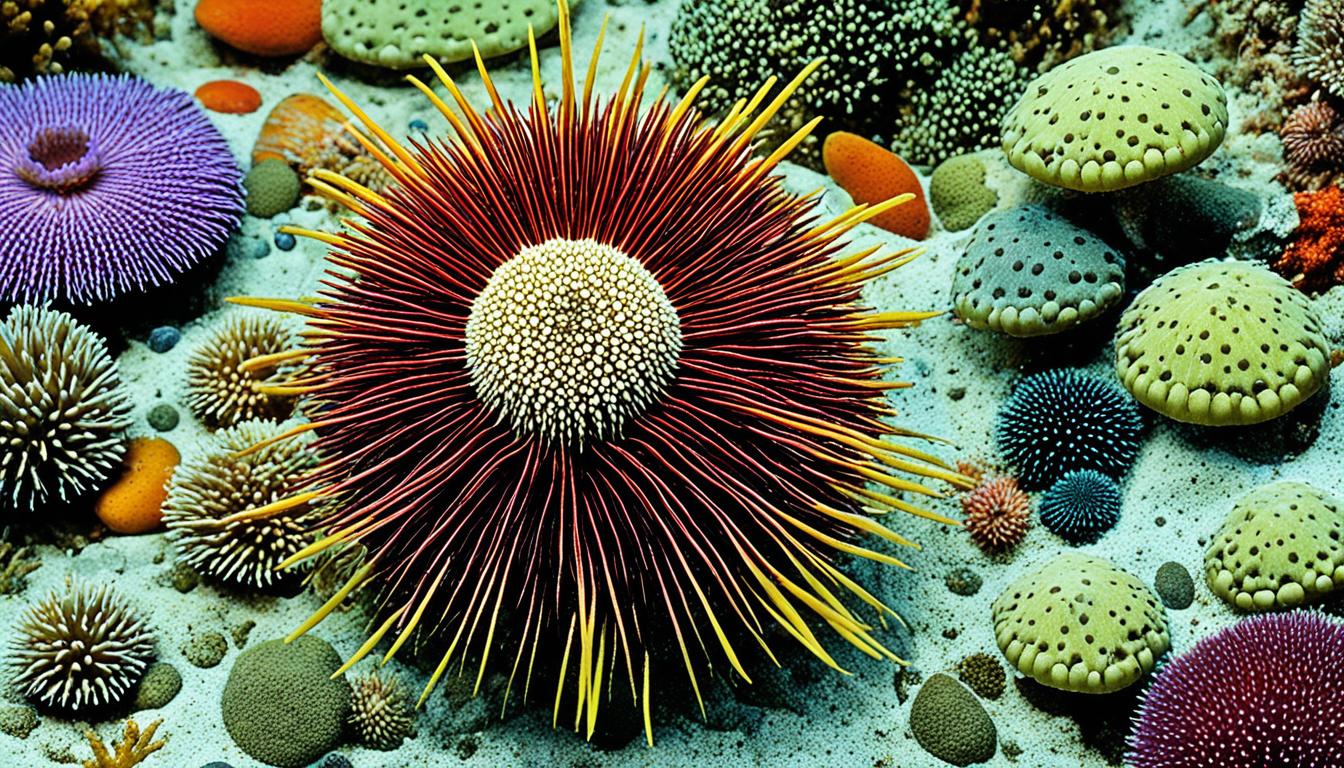Key Takeaways:
- Bald eagles are known for their iconic white heads, but there can be exceptions
- Head plumage is an important factor for identifying bald eagles
- Bald eagles’ head coloration can vary based on age, location, and genetics
- Bald eagles’ white heads have significant cultural and symbolic importance
- Conservation efforts are in place to protect bald eagles and their distinctive appearance
Understanding the Physical Characteristics of Bald Eagles
One of the most distinctive physical characteristics of bald eagles is their white head feathers. This iconic feature is what many people associate as the defining characteristic of bald eagles. However, not all bald eagles have white heads. Their head feathers can range from completely white to dark brown, with variations in between. Juvenile eagles have mottled brown and white head feathers, which gradually turn lighter as they mature. The process of developing the pure white head of an adult bald eagle can take up to five years. The coloration of bald eagles’ head feathers is influenced by a variety of factors, including genetics, diet, and environmental conditions. Despite the variations, the white head is still the most common color for adult bald eagles.The Importance of Head Plumage for Bald Eagle Identification
The unique head plumage of bald eagles is an important factor in identifying them in the wild. The white head feathers help distinguish them from other bird species, such as hawks and vultures, which may have similar body shapes and coloring. Researchers and birdwatchers can often recognize individual bald eagles based on their head markings and patterns. For example, a bald eagle with a small black spot on its head may be identifiable as a specific eagle that has been previously sighted. Understanding the physical characteristics of bald eagles, including their head feathers, is crucial for the accurate identification and conservation of this magnificent species.The Importance of Head Plumage for Bald Eagle Identification
You may wonder why the distinctive white head of a bald eagle is so important for identification. While bald eagles have several unique characteristics that set them apart from other birds of prey, their head plumage is the most distinguishable feature. The white feathers on their heads contrast sharply with their dark brown bodies, making them easily recognizable even from a distance. Identifying individual bald eagles is essential for scientific research and conservation efforts. By tracking the movements and behaviors of specific eagles, researchers can gain valuable insights into their habitat use, migration patterns, and breeding habits. While the iconic white head is the standard for bald eagle identification, it’s important to note that not all eagles have completely white heads. Some juveniles and subadults have mottled brown and white heads, while adult eagles may exhibit some dark feathers on their heads due to genetics or injuries.The Coloration of Bald Eagles’ Heads
Bald eagles are known for their iconic white heads, which serve as a defining characteristic. However, the coloration of bald eagles’ heads can vary depending on a range of factors. Age is one factor that can influence head coloration in bald eagles. Juvenile eagles typically have brown heads, which gradually lighten as they mature. By the time bald eagles reach five years of age, they typically exhibit the distinctive white head plumage. Location can also play a role in head coloration for bald eagles. Those living in southern regions may have less white on their heads, and some may even exhibit a darker, mottled appearance. This is thought to be due to the effects of heat and sun exposure. Genetics can also contribute to variations in head coloration for bald eagles. Some eagles may have genetic anomalies that result in non-white head plumage, while others may exhibit different coloration patterns due to their specific genetic makeup. Beyond these factors, environmental influences such as diet and health may also impact head coloration in bald eagles. While white heads remain a defining characteristic for the species, variations in coloration provide insight into the complex and fascinating world of these magnificent birds.Understanding Bald Eagles’ Head Markings and Patterns
Bald eagles’ head feathers are not only responsible for their distinctive appearance, but also offer valuable information for birdwatchers and researchers. The markings and patterns on their heads can provide insights into their behavior and help identify individual eagles.The Role of Head Markings
Bald eagles’ head markings are often linked to their age and maturity level. Juvenile eagles, who lack the iconic white head feathers, have dark heads that gradually turn lighter as they age. Additionally, some bald eagles may have dark markings or “scarring” on their heads, potentially from territorial disputes or hunting injuries. Researchers have discovered that bald eagles’ head markings can also signify their social status within their community. For example, dominant eagles may have more pronounced markings, while subordinate eagles have less distinct head patterns.The Significance of Head Patterns
Bald eagles’ head patterns can offer clues about their behavior and habits. For example, eagles with symmetrical head stripes may be more successful hunters, as they have a better understanding of their prey’s movements. In some cases, bald eagles may have unique head patterns that can help identify them as individuals. This is particularly useful for researchers who are monitoring their movements and behaviors. It’s important to note that bald eagles’ head patterns can vary depending on their location and environment, as well as genetics and age. However, these variations can still provide valuable information for those studying these magnificent creatures.Factors that Influence Head Coloration in Bald Eagles
While iconic for their white heads, bald eagles’ head coloration can vary based on a number of factors. First, the age of the eagle can play a role in its head color. Younger eagles often have darker feathers that can take several years to lighten and develop the distinctive white head of adults. Location can also influence head coloration. Bald eagles in southern regions may have darker heads due to increased melanin production to protect against the sun. Genetics also play a role in head color. Some bald eagles may have genetic mutations that cause their head feathers to be a non-white color. Finally, an eagle’s diet and overall health can affect the color of its feathers, including those on its head. A poor diet or illness can result in a duller or discolored head. Overall, while white is the most common color for bald eagles’ heads, variations in color can provide insight into an individual eagle’s age, location, genetics, and overall well-being.Cases of Bald Eagles with Non-White Heads
While the distinctive white head is a defining characteristic of bald eagles, there have been rare instances where individuals have been observed with non-white heads. These occurrences are typically due to genetic anomalies or injuries that have affected the bird’s feathers. In some cases, bald eagles have been observed with partially or completely dark heads, which may be the result of melanism or a genetic condition known as leucism. Melanism causes an excess of melanin, resulting in dark feathers, while leucism blocks melanin production, leading to white or pale feathers. Other instances of non-white heads in bald eagles may be due to injuries or feather damage that has altered their coloration. This can occur if the bird has suffered a traumatic injury to their head or if the feather follicles have been damaged. While rare, these cases of non-white heads in bald eagles provide insight into the variations that can occur in their appearance. However, it is important to note that these individuals are still considered bald eagles and are protected under conservation laws in the United States.The Symbolism and Cultural Significance of Bald Eagles’ White Heads
As a symbol of freedom and strength, the bald eagle holds a special place in American culture. Its white head, in particular, has become synonymous with the bird and its representation as the national bird of the United States. The eagle’s white head is often seen as a representation of purity and wisdom. As such, it has been used extensively in American iconography, from the Great Seal of the United States to the logos of countless businesses and sports teams. But beyond its visual appeal, the symbolism of the bald eagle’s white head speaks to deeper values. The bird’s association with freedom and independence reflects the American spirit, while its representation as a predator embodies strength and power. Furthermore, the use of the bald eagle as a symbol serves to remind Americans of their natural heritage and the importance of preserving it. As such, the conservation efforts to protect the species and its white head have become a matter of national pride.“The symbolism of the bald eagle’s white head speaks to deeper values. The bird’s association with freedom and independence reflects the American spirit, while its representation as a predator embodies strength and power.”Beyond its cultural significance in the United States, the bald eagle and its white head have become recognizable symbols around the world. The bird’s majestic appearance and powerful connotations make it a popular emblem in many countries and cultures. Overall, the bald eagle’s white head has become an enduring and beloved image in American culture, representing not just the bird itself, but also the values that it embodies.
The Conservation Efforts for Bald Eagles and their White Heads
Bald eagles have been the subject of significant conservation efforts in the United States due to their declining population in the mid-twentieth century. The bald eagle was subsequently listed as an endangered species by the U.S. Fish and Wildlife Service in 1967 and remained on the list until 2007. During this time, various conservation measures were implemented to protect the bald eagle and its habitat, including the banning of the pesticide DDT and the creation of the Bald and Golden Eagle Protection Act in 1940. These efforts ultimately resulted in the significant recovery and delisting of the species in 2007. Even after delisting, bald eagles continue to be protected by federal law under the Bald and Golden Eagle Protection Act, the Migratory Bird Treaty Act, and the Endangered Species Act. Additionally, habitat conservation initiatives like the Chesapeake Bay Program, the Upper Mississippi River Conservation Program, and the National Wildlife Refuge System have been established to protect bald eagles and their habitats. The conservation efforts for bald eagles also extend to their iconic white heads. The bald eagle’s distinctive head feathers are protected under the Bald and Golden Eagle Protection Act, which prohibits the take, possession, sale, purchase, barter, offer to sell, purchase or barter, transport, export or import, of any bald eagle, alive or dead, including any part, nest, or egg. This protection has helped ensure that bald eagles continue to have their characteristic white heads, which are not only an important identifier for the species but also hold cultural significance as a symbol of freedom and strength.The Future of Bald Eagles’ White Heads
As conservation efforts continue to protect bald eagles and their habitats, the future of their white heads remains a topic of interest. It is possible that as the environment changes, the coloration of their heads may adapt to better suit their surroundings. For example, if habitats become more forested, there may be a selective advantage for eagles with darker heads to blend in with the trees. Additionally, genetic variations and hybridization may continue to contribute to variations in head coloration. However, the iconic white head of bald eagles is likely to persist as a defining characteristic of the species, symbolizing their power and grace. Overall, the future of bald eagles’ white heads is uncertain, but their importance to the species and their cultural significance will continue to be celebrated and protected.The Fascinating World of Bald Eagles
So, you already know that bald eagles can have non-white heads, but did you know they have a wingspan of up to 8 feet? Here are some more interesting facts about these majestic birds:- Bald eagles are not actually bald; their name comes from the Old English word “balde,” which means white-headed.
- They can fly up to 10,000 feet in the air and can reach speeds up to 30 miles per hour.
- Bald eagles mate for life and will often return to the same nest each year to raise their young.
- Their nests, which can be up to 13 feet deep and 8 feet wide, are among the largest of any bird species.
- Bald eagles are opportunistic feeders and will eat a variety of prey, including fish, small mammals, and carrion.
- They have incredible eyesight and can spot prey from up to a mile away.
Conclusion
Now you know the answer to the question, “Do bald eagles always have white heads?” While white heads are a defining characteristic of bald eagles, there are exceptions to this rule, often due to genetic anomalies or injuries. But regardless of head coloration, bald eagles remain a symbol of strength, freedom, and resilience. As we continue to prioritize conservation efforts, we can ensure that future generations will be able to witness these magnificent birds in all their glory, including their iconic white heads. By understanding the physical features, markings, and patterns of bald eagles, we can better identify and appreciate them, both as individuals and as a species. So keep exploring the fascinating world of bald eagles, and be sure to share your newfound knowledge with others. These birds are truly a wonder of nature, and their resilience and determination serve as an inspiration to us all.Do Taste Buds Affect the Appearance of a Bald Eagle’s Head Color?
Bald eagle taste buds uncovered: The color of a bald eagle’s head is not influenced by its taste buds. Instead, it is determined by their age and reproductive cycle. Juvenile bald eagles have dark heads which gradually turn white as they mature. During breeding season, adults temporarily develop a yellow beak and bright yellow eyes. So, while taste buds play no role in the appearance of a bald eagle’s head color, they have their own fascinating purpose in determining their food preferences.










